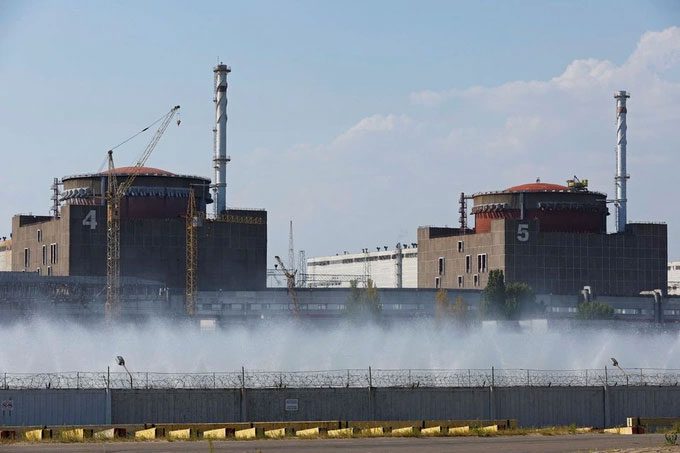In the past, the Enerhodar Nuclear Power Plant, located in Enerhodar city (Ukraine), was an “energy gift” constructed by the Soviet Union in 1980.
On May 4, Ukraine accused Moscow of preparing a “provocation” at the Zaporizhia Nuclear Power Plant (also known as Enerhodar), which is currently under Russian military control.
Meanwhile, Russia claims that Kiev plans to launch an “attack” on this facility.

A view of the Zaporizhia Nuclear Power Plant during the Ukraine-Russia conflict in August 2022. (Photo: Reuters).
The plant covers an area of approximately 1.3 million square meters and has six reactors, officially commencing operations in 1996.
During the Russia-Ukraine conflict, the nuclear power plant fell under Russian military control on March 4, 2022, and has since experienced multiple fires and disconnections from the main power grid, raising concerns about a potential nuclear disaster due to insufficient electricity to power the pumps that supply water for reactor cooling.
As the conflict escalates, many scientists and nuclear organizations are worried that shelling could have serious consequences for the power plant.
Any attack on the Enerhodar plant could lead to the release of dozens of radioactive substances, including iodine-131, cesium-137, and plutonium-239, resulting in an environmental disaster with significant and long-lasting impacts on nature and humanity.
Specifically, radioactive iodine-131 rapidly accumulates in the thyroid gland and can cause cancer in this organ, while cesium-137 remains in the soil for about 30 years and emits gamma rays that are hundreds of thousands of times more energetic than sunlight.
Finally, plutonium-239 has a half-life of 24,000 years and is highly toxic if inhaled by humans.
Both Russia’s and Ukraine’s claims regarding the power plant have raised alarms among nuclear organizations about the possibility of a nuclear catastrophe.
The destruction of the Kakhovka Dam in May in southern Ukraine has also heightened concerns over the sustainability of water in the basin, which is the primary water source for cooling the plant’s six reactors.
Earlier, on May 6, the International Atomic Energy Agency (IAEA) warned of the risk of a “serious nuclear accident” at the Zaporizhia power plant, necessitating the complete evacuation of residents in nearby towns (around 70,000 people).



















































